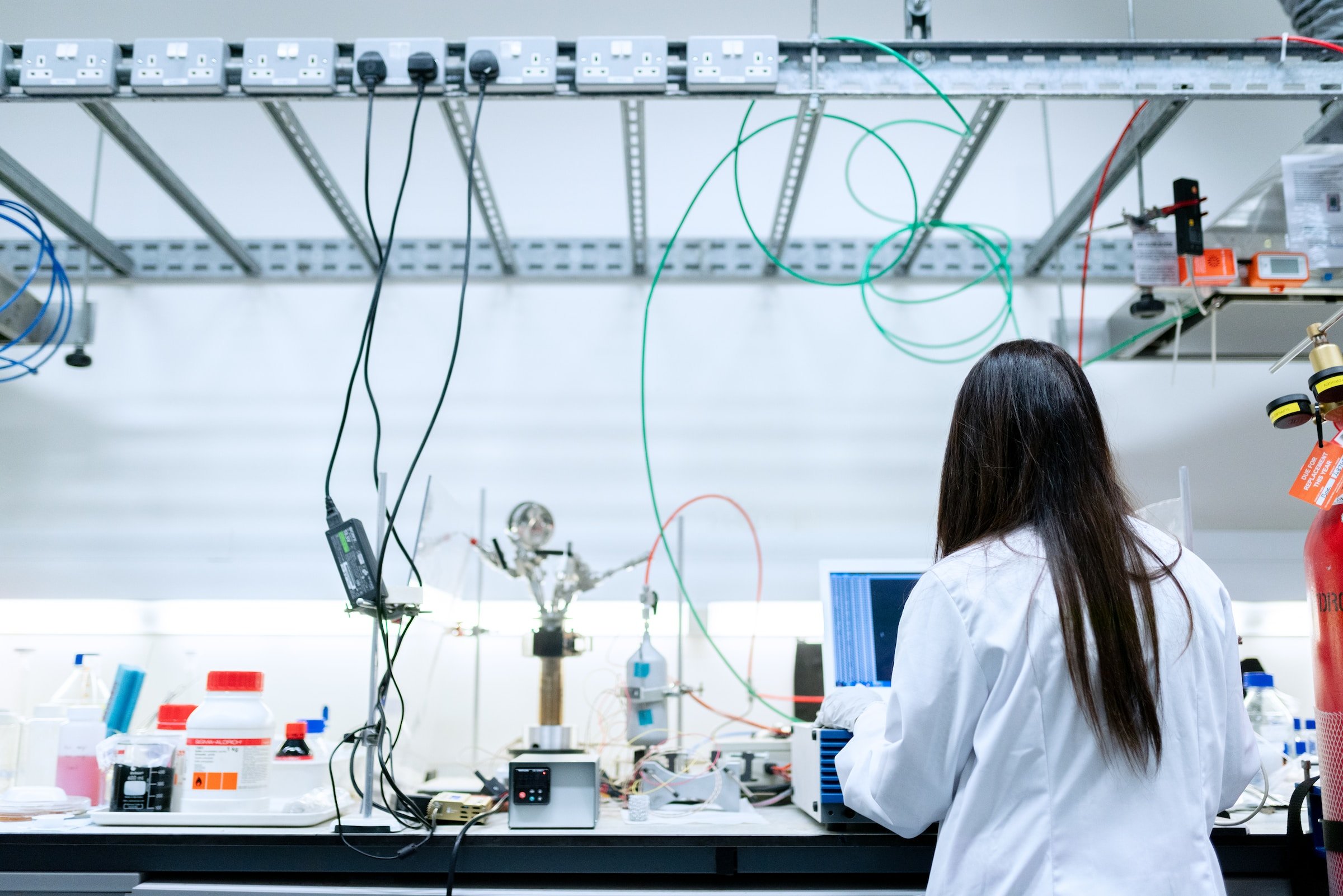Our foundational technology emerges from decades of pioneering work in neurotech
Our Universal Neural Interface is grounded on decades of cutting-edge research including DARPA’s Revolutionizing Prosthetics program that funded the University of Utah and the Johns Hopkins Applied Physics Laboratory and many others.
To bridge the gap between research and commercialization, we are accelerating development with our current collaborators: Mayo Clinic, University of South Florida, University of Utah and Unlimited Tomorrow.
1974
Researchers discover the possibility for sensory feedback using peripheral nervous system (PNS) for upper-limb amputees. (Clippinger et al.)
1989
University of Utah Department of Bioengineering creates first LIFE (longitudinal intrafascicular electrode).
(Malagodi, Horch, Schoenberg)
Photo by: Parker Gibbons
1994
Department of Bioengineering at the University of Utah creates Utah Array Electrode. (Nordhausen, Rousche & Normann)
2001
University of Utah and University of Alberta develop Utah Slanted Electrode Array (USEA) to be implanted into peripheral nerves. (Branner, Stein & Normann)
2005
Researchers show that peripheral nerves retain sensory and motor function and demonstrate first bi-directional control of a prosthetic hand. (Dillon & Horch; Dillon et al.)
2006
DARPA launches Revolutionizing Prosthetics program.
Two teams were funded: DEKA Research and Development Corporation & The Johns Hopkins University/Applied Physics Lab (APL).
Johns Hopkins develops Virtual Integration Environment - a complete limb simulation system supporting neural integration.
Photo from: DARPA
2007
After 2 years of research DEKA builds and performs initial testing of Gen 1 and Gen 2 DEKA Arm. (Resnik et al., 2013)
Photo from: Resnik et al., 2013
2008
Transverse, Intrafascicular Multichannel Electrode (TIME) is funded by European Commission’s Seventh Framework Programme.
The neural-enabled prosthetic hand (NEPH) system is developed at Florida International University.
2009
Johns Hopkins completes version 1 of the Modular Prosthetic Limb (MPL v1.0).
Photo from: Johns Hopkins APL website
2010
DARPA launches RE-NET (reliable neural-interface technology) addressing the need for high-performance neural interfaces to control advanced prosthetic limbs.
Photo from: DARPA
2014
DEKA Arm receives FDA clearance.
DARPA launches HAPTIX (hand proprioception and touch interfaces) program creating new technologies to interface permanently and continuously with the peripheral nerves.
First published use of USEAs in human nerve after amputation.
(Clark et al.)
Dustin Tyler and team at Case Western University demonstrate sensory feedback for human subjects with multiple modes of sensation at multiple points on the hand using peripheral nerve cuff electrodes.
(Tan et al.)
Researchers demonstrate restoration of natural sensory feedback in real-time bi-directional hand prothesis using TIME electrodes. (Raspopovic et al.)
Unlimited Tomorrow is founded, empowering individuals with upper-limb differences by making high-quality, 3D, low-cost bionic prosthetic arms.
Photo from: Unlimited Tomorrow website
2015
DARPA HAPTIX program partners with Case Western Reserve University, Cleveland Clinic, Draper Laboratory, Nerves Incorporated, Ripple LLC, University of Pittsburgh, University of Utah and University of Florida.
Photo from: Unsplash
2016
FDA grants an investigational device exemption for the first-in-human trial of the NEPH system at Florida International University.
Mobius Bionics launches in order to bring the LUKE Arm (formerly known as DEKA Arm) to market.
2017
First two LUKE Arms prescribed for veterans.
Researchers restore multi-degree-of-freedom control of virtual prosthetic hand movement and restoration of sensory precepts.
(Wendelken et al.)
Photo by: DARPA
2018
Gregory Clark, Jacob A. George, David Page and team at the University of Utah demonstrate first incorporation of sensory feedback via USEA stimulation triggered by LUKE arm sensors, enhancing prothesis embodiment and reducing phantom pain. (Page & George, et al.)
Photo credit: Dan Hixson/University of Utah College of Engineering
2019
Teams led by Gregory Clark at the University of Utah and Bensmaia Lab at the University of Chicago demonstrate that making nerve activation patterns more biologically realistic improves haptic discrimination and dexterous use of the LUKE arm. (George et al.)
First at-home use of the multi-articulate prosthesis with the USEA and intramuscular EMG recordings. (George, Davis, Brinton & Clark)
2020
Neurorobotics Lab at The University of Utah opens.
Unlimited Tomorrow launches TrueLimb® prosthetic arm.
Photo from: NeuroRobotics Lab website
2021 - 2022
Biologic Input Output Systems incorporates and licenses IP technology.
2023
BIOS Chief Scientist Jake George, Ph.D., explains the closed-loop system for motor control and sensory feedback (3:13). Jake references BIOS as the startup company (7:44), that has licensed the system technology. Click here for full video
Photo from: UU Health Youtube video












